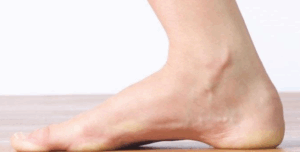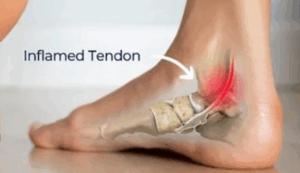The Arch Nemesis: Unmasking the Causes of Foot Pain
August 7 2025
Dealing with arch pain? You’re not alone! Our latest article from Family Foot & Leg Center dives deep into the different types and causes of arch pain, helping you understand why your feet might be hurting and what you can do about it. Read more to take the first step towards happy, pain-free feet!
Karan Malani, FACFAS
Kevin Lam, DPM, FACFAS
It’s 2025, and you’re experiencing arch pain. You’re not alone. As a podiatrist at Family Foot & Leg Center, I see patients with arch pain on a daily basis. It’s one of the most common complaints we hear, and for good reason: your arches are fundamental to the way you stand, walk, and run. They act as natural shock absorbers, distributing your body weight evenly and adapting to various terrains. When something goes wrong with this intricate system, pain can quickly arise, ranging from a dull ache to a sharp, debilitating sensation. Understanding the type of arch pain you’re experiencing, and more importantly, its cause, is the first step toward effective treatment. Let’s delve into some of the most frequent culprits we encounter here at Family Foot & Leg Center.
Plantar Fasciitis: The Most Common Culprit
If you’re waking up with a sharp, stabbing pain in your heel and arch, especially with your first few steps, plantar fasciitis is likely at the top of our diagnostic list. The plantar fascia is a thick band of tissue that runs along the bottom of your foot, connecting your heel bone to your toes, and crucially, supporting your arch.
Plantar fasciitis occurs when this fascia becomes inflamed, often due to repetitive strain. Think of it like a rope that’s constantly being tugged – eventually, smalls tears develop, leading to inflammation and pain.
Common risk factors include:
Overpronation (flat feet): When your arch collapses inward excessively, it puts increased tension on the plantar fascia.
High arches: While seemingly opposite, high arches can also be problematic, as they may not absorb shock as efficiently, placing more stress on the fascia.

Tight calf muscles: Limited ankle flexibility can alter your gait, increasing strain on the arch.
Obesity: Excess weight adds significant stress to the feet.
Prolonged standing or activities: Jobs that require long hours on your feet, or activities like running, can aggravate the condition.
Improper footwear: Shoes lacking adequate arch support or cushioning can exacerbate the issue.
Treatment for plantar fasciitis typically involves a multi-pronged approach, including rest, ice, stretching exercises, supportive footwear, orthotics, and sometimes night splints or anti-inflammatory medications. In persistent cases, we might explore other options like corticosteroid injections or platelet-rich plasma (PRP) therapy.
Posterior Tibial Tendon Dysfunction (PTTD): The Collapsing Arch
PTTD, sometimes referred to as “adult acquired flatfoot,” is a progressive condition that occurs when the posterior tibial tendon, which runs along the inside of our ankle and foot and is crucial for supporting your arch, becomes inflamed or torn. This tendon helps to hold up the arch and turn your foot inward. When it weakens, the arch can gradually flatten.
Risk factors for PTTD include age (it’s more common in women over 40), obesity, diabetes, and certain inflammatory conditions. Early diagnosis, is key with PTTD, as timely intervention can prevent the condition from worsening. Treatment may involve rest, immobilization (like walking boot), custom orthotics, physical therapy, and in severe cases, surgical repair.

Arch Strains/Sprains: The Acute Injury
While plantar fasciitis and PTTD are often chronic, arch strain or sprain can be an acute injury resulting from sudden overstretching or tearing of the ligaments, muscles, or tendons that support the arch. This can happen during a fall, a misstep, or a sudden increase in activity without proper conditioning.
Symptoms usually include immediate pain, tenderness, and sometimes swelling in the arch area. The pain may be sharp and localized.
Treatment typically involves the RICE protocol (Rest, Ice, Compression, Elevation), over-the-counter pain relievers, and avoiding activities that aggravate the pain until the tissues have healed. Gradual return to activity with appropriate supportive footwear is crucial to prevent re-injury.
Less common than the other causes but equally important to consider is tarsal tunnel syndrome. This condition occurs when the posterior tibial nerve, which runs through a narrow space on the inside of your ankle called the tarsal tunnel, becomes compressed or entrapped.
Symptoms can vary but often include burning, tingling, numbness, or shooting pain in the arch, heel, and toes. These sensations may worsen with activity or at night. Causes of nerve compression can include ankle sprains, ganglion cysts, varicose veins, or even inflammation from conditions like arthritis.
Diagnosis often involves a thorough physical examination, nerve conduction studies, and imaging like
MRI to identify any potential compressive masses. Treatment focuses on relieving the pressure on the nerve and may include rest, anti-inflammatory medications, physical therapy, custom orthotics, or in some cases, surgery to decompress the nerve.
Stress Fracture: The overuse injury to bone
Less common than other causes but equally important to consider is tarsal tunnel syndrome. This condition occurs when the posterior tibial nerve, which runs through a narrow space on the inside of your ankle called the tarsal tunnel, becomes compressed or entrapped.
Symptoms can vary but often include burning, tingling, numbness, or shooting pain in the arch, heel, and toes. These sensations may worsen with activity or at night. Causes of nerve compression can include ankle sprains, ganglion cysts, varicose veins, or even inflammation from conditions like arthritis.
Other Potential Causes
Beyond these common conditions, other factors can contribute to arch pain
Arthritis: Degenerative changes in the joints of the midfoot can lead to pain and stiffness.
Neuroma: While more commonly associated with the ball of the foot, neuromas (thickened nerve tissue) can sometimes cause radiating pain into the arch.
Accessory Navicular Syndrome: Some individuals have an extra bone near the navicular bone, which can cause pain and inflammation, particularly with activity or ill-fitting shoes.
Ligamentous Laxity: Generalized looseness in the ligaments of the foot can lead to decreased arch support and pain.
When to See a Podiatrist
If arch pain persists despite rest and basic home care, it’s time to consult a podiatrist. Don’t “tough it out” – early intervention is key to preventing chronic issues and getting you back on your feet comfortably.
At Family Foot & Leg Center, we’ll perform a thorough examination, including reviewing your history, assessing your gait, and potentially ordering imaging. Based on our findings, we’ll create a personalized treatment plan. Our aim is to alleviate pain and address its root cause, ensuring lasting foot health. Your feet are your foundation; let us help keep them strong and pain-free.
If you are experiencing pain in the arch of your foot, contact Dr. Malani’s office at (239) 430-3668  (FOOT) or visit www.NaplesPodiatrist.com to schedule an examination.
(FOOT) or visit www.NaplesPodiatrist.com to schedule an examination.
Serving Southwest Florida Since 2005, Family Foot & Leg Center has multiple convenient locations throughout Collier, Lee, Charlotte, and Sarasota Counties. Offering pediatric to geriatric family care: Ingrown Toenails, Heel Pain, Bunions, Foot / Ankle Arthritis Pain, Plantar Fasciitis, Foot / Ankle Surgery, Custom Orthotics, and Diabetic Wound Care. In office X-rays, ultrasounds, and minor surgical suite exam rooms. Practice powered by EMR and advanced technologies.
Home of the Lam Minimally Invasive No-Scar Bunion Surgery! Come Discover Why Patients Love Our 5-Star Foot & Ankle Care!
Same Day Appointments! Easy Online Appointment Scheduling.

 Fax: (239) 692-9436
Fax: (239) 692-9436 Tel: 239-430-3668
Tel: 239-430-3668